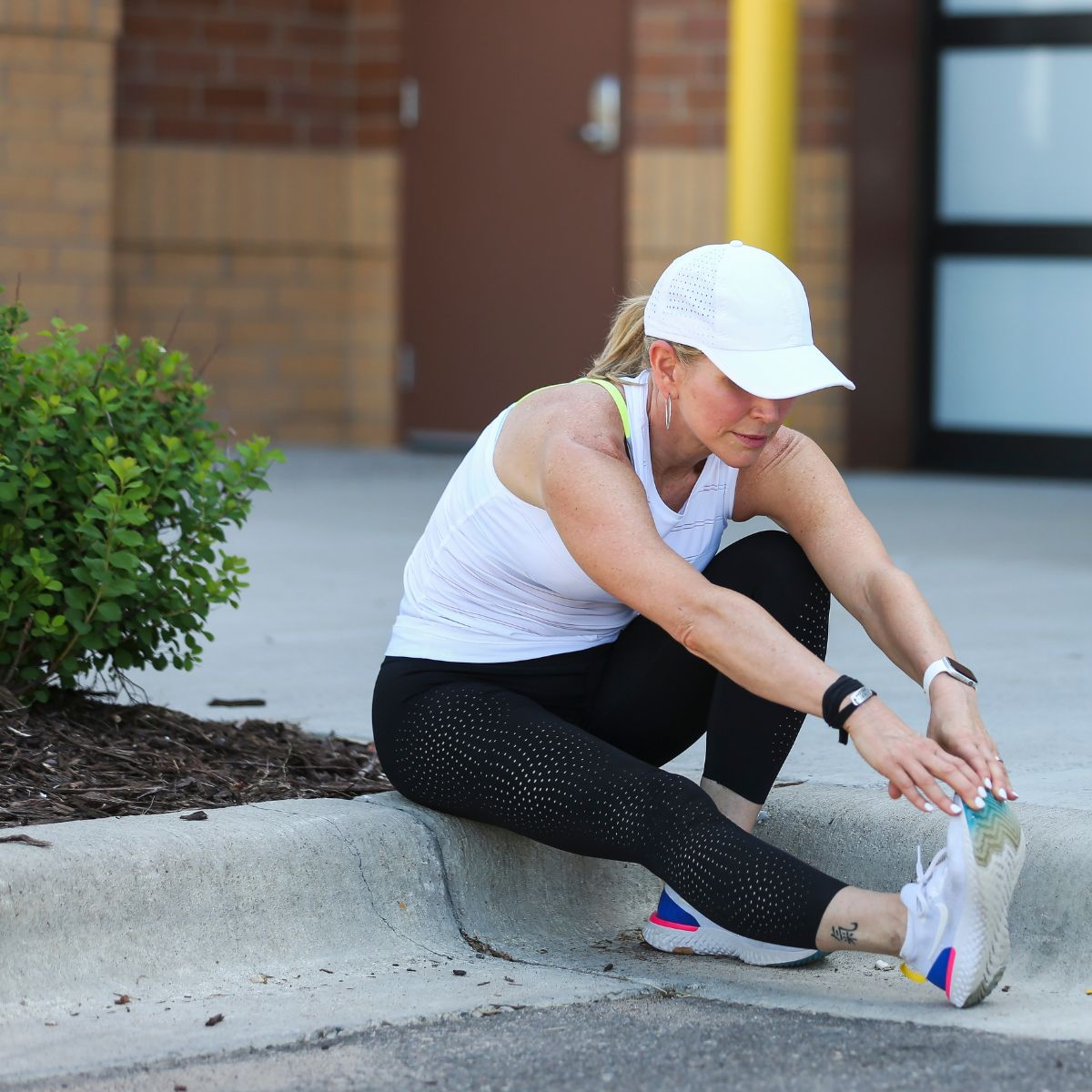
As we age, maintaining an active lifestyle becomes increasingly important. After reaching the age of 50, exercise can play a crucial role in improving mental health, boosting energy levels, and preventing chronic diseases such as heart disease and diabetes. However, it’s essential to adopt a workout plan that respects your body’s needs and limits to avoid injury and ensure longevity in your fitness journey. In this blog post, we’ll dive into an exercise workout plan tailored for individuals over 50, focusing on flexibility, strength, endurance, and balance.
Understanding The Importance of Exercise Workout Plan After 50
Regular physical exercise activity for those over 50 is vital for maintaining health and independence. Exercise helps to manage weight, strengthen the heart, and reduce the risk of chronic diseases. Additionally, it improves mental health and cognitive function, making it a cornerstone of a healthy aging process.
Starting With Flexibility
Warm-Up: The Foundation of Your Over 50 Workout Plan
Before starting any exercise, warming up is crucial to prepare your body and reduce the risk of injury. A good warm-up should last at least 5 to 10 minutes and could include light walking, gentle stretching, or cycling on a stationary bike. This initial step increases your heart rate and blood flow to the muscles, making them more pliable for the workout ahead.
Stretching: Enhancing Flexibility
After the warm-up, move on to a stretching routine focusing on major muscle groups. Include static stretches for the shoulders, chest, back, thighs, hamstrings, and calves. Hold each stretch for about 30 seconds to improve flexibility and range of motion. Regular stretching can help maintain flexibility, reduce muscle tension, and enhance mobility, which is essential as you age.
Building Strength
Resistance Training: A Key to Muscle Health
Strength training should be a core component of your over 50 workout plan. Utilizing light weights, resistance bands, or even body weight can significantly impact your muscle health. Aim for two to three days a week of strength training, focusing on major muscle groups such as the legs, hips, back, abdomen, chest, shoulders, and arms.
Exercises for Strength
- Squats: Great for leg and lower body strength. Use a chair for support if needed.
- Wall Push-ups: Ideal for building upper body strength without straining the wrists.
- Bicep Curls: Can be performed with dumbbells or resistance bands to strengthen the arms.
- Leg Lifts: Helps in strengthening the core and improving balance.
Ensure to perform these exercises with proper form and control, focusing on slow, steady movements.
Enhancing Endurance
Cardiovascular Workouts: Boosting Heart Health
Cardiovascular exercises such as walking, swimming, cycling, or jogging are vital for heart health and endurance. Start with moderate-intensity activities, gradually increasing the duration and intensity. Aim for at least 150 minutes of moderate aerobic activity or 75 minutes of vigorous activity throughout the week, as recommended by health authorities.
Improving Balance With Workout Plan After 50
Balance Exercises: Preventing Falls
Balance exercises are crucial for preventing falls, a common concern for those over 50. Practices such as standing on one foot, walking heel to toe, or Tai Chi can significantly improve your balance and coordination.
Putting It All Together
Sample Weekly Over 50 Workout Plan
Here’s a balanced over 50 workout plan that incorporates all the elements discussed:
- Monday: Strength training focusing on upper body.
- Tuesday: 30 minutes of brisk walking or cycling.
- Wednesday: Rest or gentle stretching.
- Thursday: Strength training focusing on lower body and core.
- Friday: 30 minutes of swimming or water aerobics.
- Saturday: Balance exercises and flexibility stretches.
- Sunday: Rest or a leisurely walk.
Flexibility
Flexibility exercises are the unsung heroes of a well-rounded fitness routine, especially as we age. Improving flexibility not only enhances your range of motion but also reduces the risk of injuries by making the muscles more pliable. Yoga and Pilates are excellent practices that focus on both flexibility and core strength, offering routines that can be modified to suit various fitness levels. Incorporating these activities into your weekly routine can offer a gentle yet effective way to maintain flexibility and support overall well-being.
Practical Tips for Flexibility Training:
- Start Slowly: Begin with basic stretches, gradually moving to more advanced poses as your flexibility improves.
- Incorporate Variety: Utilize different stretching techniques, such as dynamic stretches before workouts and static stretches after.
- Use Props: Yoga blocks, straps, and cushions can help achieve proper form and deepen stretches.
Expanding on Strength Training
Strength training, particularly for those over 50, goes beyond building muscle mass; it’s about maintaining muscle strength, improving bone density, and boosting metabolism. It’s important to focus on compound movements that target multiple muscle groups, making your over 50 workout plan more efficient and effective. Exercises like deadlifts (with light weights) and resistance band rows offer a comprehensive approach to strength building.
Creating a Strength Routine:
- Balance Your Workouts: Ensure your routine equally targets all major muscle groups to avoid imbalances.
- Progressive Overload: Gradually increase the weight or resistance as your strength improves to continue making gains.
- Rest and Recovery: Muscles need time to repair and grow. Ensure you have at least one rest day between strength training sessions for a particular muscle group.
Enhancing Cardiovascular Endurance Further
For individuals over 50, cardiovascular health becomes increasingly crucial. Endurance exercises help in managing blood pressure, reducing cholesterol levels, and improving heart health. While walking, swimming, and cycling are excellent options, there are other enjoyable ways to incorporate cardio into your life. Dancing, hiking, and group fitness classes can provide a fun and social aspect to your workout routine, keeping motivation high.
Maximizing Cardiovascular Workouts:
- Integrate Interval Training: Adding short bursts of high-intensity exercise to your cardio routine can significantly enhance endurance and burn more calories.
- Set Realistic Goals: Gradually increase the duration and intensity of your over 50 workouts plan to avoid burnout and injuries.
- Monitor Your Heart Rate: Use a heart rate monitor to stay within your target heart rate zone, ensuring your workouts are safe and effective.
Balance and Stability
As we delve deeper into the importance of balance exercises, it’s clear they are fundamental in preventing falls and maintaining mobility. Incorporating balance-focused activities like Tai Chi, which emphasizes slow, controlled movements, can significantly improve stability and coordination. Simple daily practices, such as standing on one leg while brushing your teeth, can also contribute to better balance over time.
Enhancing Balance Through Daily Activities:
- Practice Regularly: Consistency is key. Practice balance exercises daily, even if only for a few minutes.
- Challenge Yourself Safely: Gradually increase the difficulty of your balance exercises as your stability improves, always ensuring safety.
- Combine with Strength Training: Many strength training exercises, especially those using free weights, inherently challenge and improve your balance.
Embracing a Holistic Approach
Finally, embracing a holistic approach to your fitness journey after 50 is crucial. This means looking beyond physical exercise and considering nutrition, mental health, and social connections as integral components of your overall health. Eating a balanced diet rich in nutrients supports physical activity, while mindfulness practices like meditation can enhance mental well-being. Staying socially active, whether through group exercise classes or social sports leagues, can boost motivation and provide a sense of community.
Tips for A Successful Over 50 Workout Plan
- Listen to Your Body: Always pay attention to your body’s signals and adjust your workout intensity accordingly.
- Stay Hydrated: Drink plenty of water before, during, and after your workouts.
- Wear Appropriate Gear: Invest in good quality, supportive shoes and comfortable clothing.
- Consistency is Key: Regularity is more important than intensity. Aim to be consistent with your workouts.
- Consult a Professional: Before starting any new exercise regimen, especially if you have existing health conditions, consult with a healthcare provider or a fitness professional.
A Path to Wellness A Workout Plan For Over 50
Adopting a comprehensive exercise workout plan after 50 is more than a step towards physical fitness; it’s a journey to overall wellness. By incorporating flexibility, strength, endurance, and balance exercises into your routine, complemented by a holistic approach that includes proper nutrition, mental health care, and social engagement, you’re not just aging; you’re thriving. Remember, it’s about progress, not perfection. Each step forward is a victory, and every day is an opportunity to embrace your health and vitality.
Most Recommended
#Workout #Plan







.JPG)




















